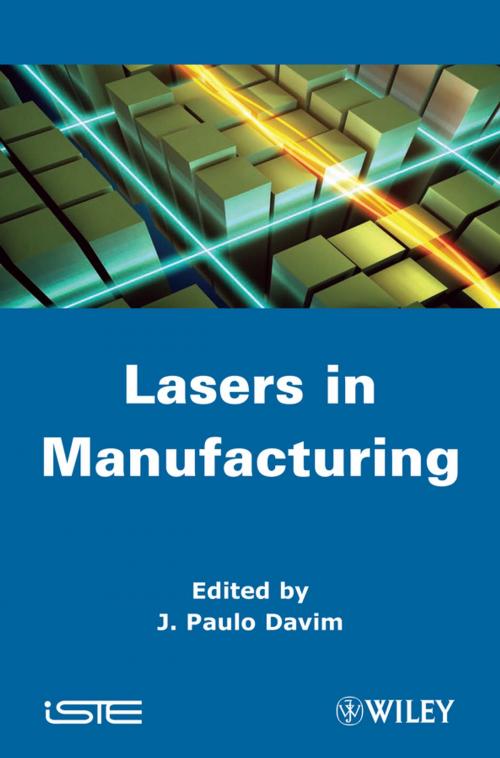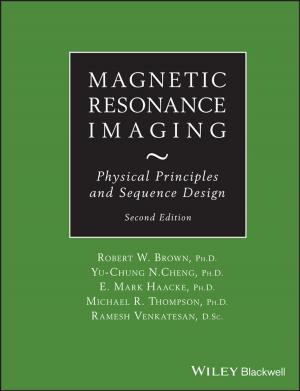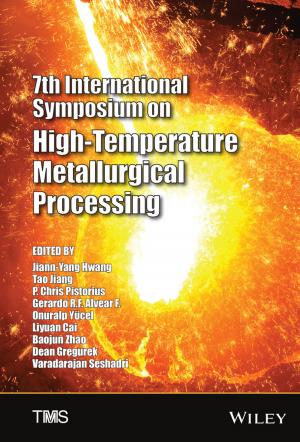| Author: | ISBN: | 9781118562925 | |
| Publisher: | Wiley | Publication: | March 4, 2013 |
| Imprint: | Wiley-ISTE | Language: | English |
| Author: | |
| ISBN: | 9781118562925 |
| Publisher: | Wiley |
| Publication: | March 4, 2013 |
| Imprint: | Wiley-ISTE |
| Language: | English |
Generally a laser (light amplification by stimulated emission of radiation) is defined as “a device which uses a quantum mechanical effect, stimulated emission, to generate a coherent beam of light from a lasing medium of controlled purity, size, and shape”. Laser material processing represents a great number of methods, which are rapidly growing in current and different industrial applications as new alternatives to traditional manufacturing processes. Nowadays, the use of lasers in manufacturing is an emerging area with a wide variety of applications, for example, in electronics, molds and dies, and biomedical applications.
The purpose of this book is to present a collection of examples illustrating the state of the art and research developments to lasers in manufacturing, covering laser rapid manufacturing, lasers in metal forming applications, laser forming of metal foams, mathematical modeling of laser drilling, thermal stress analysis, modeling and simulation of laser welding, and the use of lasers in surface engineering.
This book can be used as a research book for a final undergraduate engineering course or as a subject on lasers in manufacturing at the postgraduate level. Also, this book can serve as a useful reference for academics, laser researchers, mechanical, manufacturing, materials or physics engineers, or professionals in any related modern manufacturing technology.
Contents
- Laser Rapid Manufacturing: Technology, Applications, Modeling and Future Prospects, Christ P. Paul, Pankaj Bhargava, Atul Kumar, Ayukt K. Pathak and Lalit M. Kukreja.
- Lasers in Metal Forming Applications, Stephen A. Akinlabi, Mukul Shukla, Esther T. Akinlabi and Tshilidzi Marwala.
- Laser Forming of Metal Foams, Fabrizio Quadrini, Denise Bellisario, Erica A. Squeo and Loredana Santo.
- Mathematical Modeling of Laser Drilling, Maturose Suchatawat and Mohammad Sheikh.
- Laser Cutting a Small Diameter Hole: Thermal Stress Analysis, Bekir S. Yilbas, Syed S. Akhtar and Omer Keles.
- Modeling and Simulation of Laser Welding, Karuppudaiyar R. Balasabramanian, Krishnasamy Sankaranarayanasamy and Gangusami N. Buvanashekaran.
- Lasers in Surface Engineering, Alberto H. Garrido, Rubén González, Modesto Cadenas, Chin-Pei Wang and Farshid Sadeghi.
Generally a laser (light amplification by stimulated emission of radiation) is defined as “a device which uses a quantum mechanical effect, stimulated emission, to generate a coherent beam of light from a lasing medium of controlled purity, size, and shape”. Laser material processing represents a great number of methods, which are rapidly growing in current and different industrial applications as new alternatives to traditional manufacturing processes. Nowadays, the use of lasers in manufacturing is an emerging area with a wide variety of applications, for example, in electronics, molds and dies, and biomedical applications.
The purpose of this book is to present a collection of examples illustrating the state of the art and research developments to lasers in manufacturing, covering laser rapid manufacturing, lasers in metal forming applications, laser forming of metal foams, mathematical modeling of laser drilling, thermal stress analysis, modeling and simulation of laser welding, and the use of lasers in surface engineering.
This book can be used as a research book for a final undergraduate engineering course or as a subject on lasers in manufacturing at the postgraduate level. Also, this book can serve as a useful reference for academics, laser researchers, mechanical, manufacturing, materials or physics engineers, or professionals in any related modern manufacturing technology.
Contents
- Laser Rapid Manufacturing: Technology, Applications, Modeling and Future Prospects, Christ P. Paul, Pankaj Bhargava, Atul Kumar, Ayukt K. Pathak and Lalit M. Kukreja.
- Lasers in Metal Forming Applications, Stephen A. Akinlabi, Mukul Shukla, Esther T. Akinlabi and Tshilidzi Marwala.
- Laser Forming of Metal Foams, Fabrizio Quadrini, Denise Bellisario, Erica A. Squeo and Loredana Santo.
- Mathematical Modeling of Laser Drilling, Maturose Suchatawat and Mohammad Sheikh.
- Laser Cutting a Small Diameter Hole: Thermal Stress Analysis, Bekir S. Yilbas, Syed S. Akhtar and Omer Keles.
- Modeling and Simulation of Laser Welding, Karuppudaiyar R. Balasabramanian, Krishnasamy Sankaranarayanasamy and Gangusami N. Buvanashekaran.
- Lasers in Surface Engineering, Alberto H. Garrido, Rubén González, Modesto Cadenas, Chin-Pei Wang and Farshid Sadeghi.















